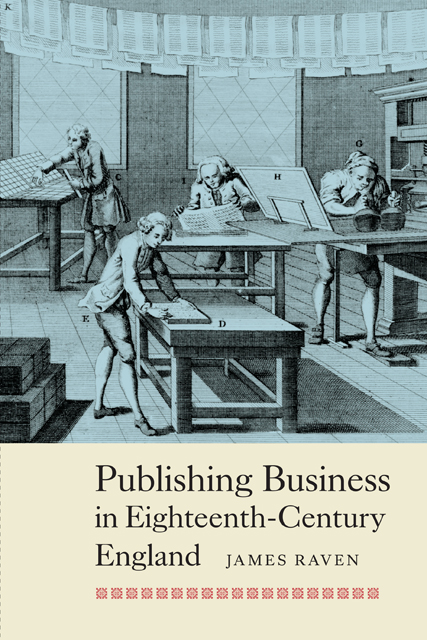Book contents
- Frontmatter
- Dedication
- Contents
- Acknowledgements
- Notes on Dates, Booksellers, Founts and Intaglio
- List of Abbreviations
- 1 The Mediation of the Press
- 2 England and the Uneven Economic Miracle
- 3 The Printed and the Printers
- 4 Serviced by Stationery and Printing
- 5 Printing and the City of London
- 6 Advertising
- 7 The Advertisers
- 8 Intelligence
- 9 Instruction and Guidance
- 10 Wider Discussion
- 11 Business, Publishing and the Gentleman Reader
- Conclusion
- Bibliography of Printed Sources
- Index
- Frontmatter
- Dedication
- Contents
- Acknowledgements
- Notes on Dates, Booksellers, Founts and Intaglio
- List of Abbreviations
- 1 The Mediation of the Press
- 2 England and the Uneven Economic Miracle
- 3 The Printed and the Printers
- 4 Serviced by Stationery and Printing
- 5 Printing and the City of London
- 6 Advertising
- 7 The Advertisers
- 8 Intelligence
- 9 Instruction and Guidance
- 10 Wider Discussion
- 11 Business, Publishing and the Gentleman Reader
- Conclusion
- Bibliography of Printed Sources
- Index
Summary
This study identifies consequential connections between diverse types of late seventeenth- and eighteenth-century printed and semi-printed materials, and productive relationships between small items such as jobbing forms and documents, and larger publications including newspapers, pamphlets and books that communicated commercial and financial information, guidance and opinion. Also at issue is the connection between the matter carried by print and how print conveyed it, the most important products of that connection being knowledge, accuracy, efficiency, security, authority and the creation of trust. In the 120 years between 1680 and 1800, stationers, printers, engravers and booksellers contributed to a multiplication of material publications that enhanced economic confidence and engineered beneficial (as well as some disadvantageous) conformities of practice and principle.
In 1726, the French visitor de Saussure observed that ‘you often see an Englishman taking a treaty of peace more to heart than he does his own affairs’. Sixty years later, a greatly matured and more sophisticated press presented various reports in anticipation of the Versailles Treaty of 21 November 1787. At the beginning of that month, the World and Fashionable Advertiser recounted that ‘a prodigious number of new faces, male and female, were seen at the Bank yesterday, investing their property, in consequence of the Peace appearance; and the Three per Cent, Consols, felt the influence of returning Confidence’. This followed, said the article, misreporting and a volatility in trading and fortune. Now, ‘it is expected that to-morrow and Tuesday next will witness the greatest rise when the Stocks will increase before Christmas, and most probably will ascertain the standard price of the Funds; so that those who are fortunate enough to get in this day, will receive the best interest for their money’. This report from the World and Fashionable Advertiser then listed ‘the reasons which lead us to this opinion’ (and the editorial ploy of the ‘us’ was significant).
- Type
- Chapter
- Information
- Publishing Business in Eighteenth-Century England , pp. 256 - 275Publisher: Boydell & BrewerPrint publication year: 2014

